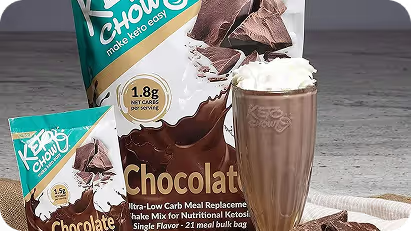5 Questions that DTC subscription brands need to ask themselves
We browsed through podcasts, blogs and case studies to find 5 important questions that subscription brands need to ask themselves while running their store on Shopify.
The idea is to improve your subscription practices and better understand your subscribers instead of just focussing on more and more orders.
These 5 questions will help you grow your subscription brand and reflect on your DTC business as a whole. Take a look:
Q.1 - Is a one-time purchase better than a subscription?
These days shipping is really fast. If your customer is sitting in NY City, they can get anything delivered the very next day.
So while subscription are all about convenience, if shipping is superfast then would maintaining a subscription be more of a hassle than utility for your customer?
Your customer might think that if I can order the product and get it delivered fast then why subscribe to it. He or she might not feel that they are gonna run out of your product anymore. Subscription would lose its value.
To counter this, brands can figure out your customer’s usage patterns. Easing out things like vacation pause for instance can make subscriptions hassle-free.
Add the pause or skip button in the upcoming order email so your customer can quickly tweak their consumption as per their usage.
Too much stock will make the customer think “I'll order the next one rather than subscribe to it.”
And you don’t want that.

Q.2 - Is your brand subscription-only?
Brands can try to become a subscription-only model, however this can be slightly more difficult than imagined. Because subscription only brands have to have a very loyal customer base and limited competition.
Brands need a mix of new and repeat customers. And sure LTV can be your most important metric but that does not mean you should avoid one-time purchasers at all costs.
If you want to build a committed customer base then you can’t expect that commitment to be built just in the first interaction. It takes multiple trials, samples, usages before a customer goes on to decide that yes this product is a part of my lifestyle and I’d like to subscribe to it.
The beginning of the subscription is the pinnacle of the relationship, not the introduction.
Split testing your subscription widget is a good idea to decide what customers like the most - one-time purchases or subscription purchases.

Q.3 - Are you tricking people into subscribing to your brand?
Giving customers a good joining incentive, say 20% off or 50% off, can surely entice people to start a subscription, and you can hope that they forget to cancel, but there are high chances that a lot of them will drop off after the first order (considering offering a one-time coupon before they leave)
Second-order churn is an industry-wide DTC problem. Brands can beat this by building their funnel the right way. Instead of getting quick customers with high discounts, your funnel should be based on progressive discovery.
The idea is to convert a mildly interested customer - one who has been acquainted with your product into an extremely interested customer and then that into a customer who’s willing to make a bigger commitment like “I want to stop using my old tea brand and start using yours from now onwards”.
The customer who says “I’ve been using this tea brand for two years but looking at your discount, I might want to immediately switch to your brand for a whole year without really trying it” is bound to drop out after receiving his or her first order.
Q.4 - Do your subscriptions help people save time or save money?
While some of your subscribers might be subscribing to you to save money, there might just be a whole segment that’s subscribing to save time.
Subscriptions = spending money to save time
As people get older they tend to have more disposable income but less time. They use that income to set and forget subscriptions - giving them more time to think about other things in life.
So their money here is being used to buy more time. Subscriptions can be super convenient because you don’t really have to think about it. And this might be the best selling point for a lot of people instead of discounts. No one wants to think about buying toilet paper again, buying dog food again, or when they have to restock their tea again.
Q.5 - Are your subscriptions flexible enough?
Flexibility matters the most in subscriptions. No one, literally no one wants to be locked into a subscription.
With a flexible subscription - churned customers are likely to come back then leaving once and for all.
An average American household spends $200 - with an AOV of $50 - let’s say this is four brands. However, the number of brands offering subscriptions goes up in thousands. But the household has its limits, they have to be choosy and selective. It’s not possible for them to go on subscribing to as many brands as they’d like.
So it’s possible that customers will have a primary subscription and then secondary or tertiary subscriptions. Moreover, they’ll experiment with other flavours and play around with other brands over the course of an year, but it’s less likely that they’ll subscribe to 10 different products at the same time.
Brands should consider investing in a subscription software that’s fairly flexible and gives your subscribers complete control over their subscriptions.

Explore Loop’s customer portal and configure subscriptions without boundations.
Table of contents























.png)







.png)







































